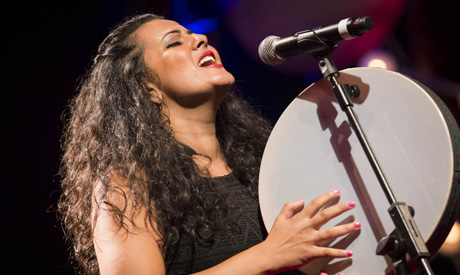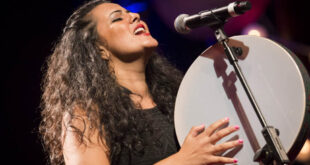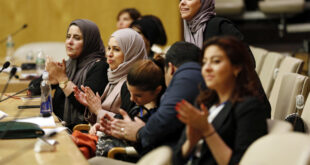Scroll down for Arabic abstract.
This study traces feminist markers by analyzing expressions of feminism in popular Arab songs across various media through the feminist and social role theoretical frameworks. The applied portion of the study is limited to YouTube. For the methodological framework, the study adopts a mixed approach. This is established through a congruent triangulation to collect and analyze both qualitative and quantitative data, as well as via critical discourse analysis (CDA) tools across developmental, textual, and contextual aspects. Moreover, the study analyzes frameworks and inferences. Additionally, van Dijk’s ideological square of power and hegemony is also utilized. A gender-based social role analysis is also conducted to arrive at the necessary descriptive/quantitative data. The study examines a selected sample of eighty-four Arabic songs that date from 2011 to mid-2023. The selected samples all met the minimum threshold of no less than one million views each. According to the findings, feminist allusions and markers have evolved. More specifically, these markers have developed from merely airing grievances regarding discrimination or violence into more affirmative stances of resistance, right to equality and independence, and even superiority and dominance over males. The psychological implications reveal a similar evolution as they evolved from expressions of surrender into resistance, defiance, pride, and disrespect directed toward males. Those allusions and markers do not maintain a coherent feminist discourse with a clear feminist theory, nor do they define new societal gender-based roles for females or males. Instead, they express various roles within the framework of a male/female relationship that involve fluctuating scales of power.
Link to full translated manuscript: https://www.arabmediasociety.com/?p=8294
الدلائل النسوية في الأغنية العربية المعاصرة: دارسة تحليلية للخطاب والجندر
تقوم هذه الد ارسة على تتبع الدلائل النسوية، التي تعني إشا ارت التعبير عن الفكر النسوي في الأغاني ال ارئجة عبر وسائل الإعلام بالتطبيق على منصة Youtube، وتوظف الد ارسة النظرية النسوية ونظرية الأدوار الاجتماعية إطا ا ر نظري ا، بينما تقوم في الجانب المنهجي باعتماد المنهج المختلط عبر تطبيق أسلوب التثليث المت ازمن لجمع وتحليل البيانات الكمية والكيفية، وتوظف أدوات تحليل الخطاب النقدي بأبعاده التطورية والنصية والسياقية وكذلك تحليل الأطر والاستدلالات، مع تطبيق التحليل الأيديولوجي باستخدام مربع فان دايك لفهم علاقات الهيمنة والسلطة، إضافة إلى تحليل الأدوار الاجتماعية من منظور جندري، إلى جانب تحليل المحتوى لجمع البيانات الكمية الوصفية الضرورية. وتمثلت عينة الد ارسة في ٨٤ أغنية عربية في الفترة من ٢٠١١ حتى منتصف ٢٠٢٣ بشرط تجاوز عدد المشاهدات مليون مشاهدة حد ا أدنى، وأسفرت النتائج عن تأكيد تطور الدلائل النسوية من مجرد التعبير عن الشكوى من التمييز أو التعنيف إلى المقاومة وتأكيد الحق في المساواة والاستقلالية، وصولا إلى تأكيد الهيمنة والتفوق على الرجل، كذلك تطورت السياقات النفسية من الاستسلام مرو ا ر بالمقاومة والص ارع وانتها ء بالزهو بالنفس واحتقار الرجل ، ولم تستدع هذه الدلائل وجود خطاب نسوي متماسك معبر عن نظرية نسوية واضحة، كما لم تطرح أدوا ا ر جندرية جديدة للرجل والم أرة في المجتمع، بل طرحت أدوا ا ر مختلفة في إطار العلاقة بين الرجل والم أرة تتغير فيها موازين القوى فيما بينهما.
 Arab Media & Society The Arab Media Hub
Arab Media & Society The Arab Media Hub





